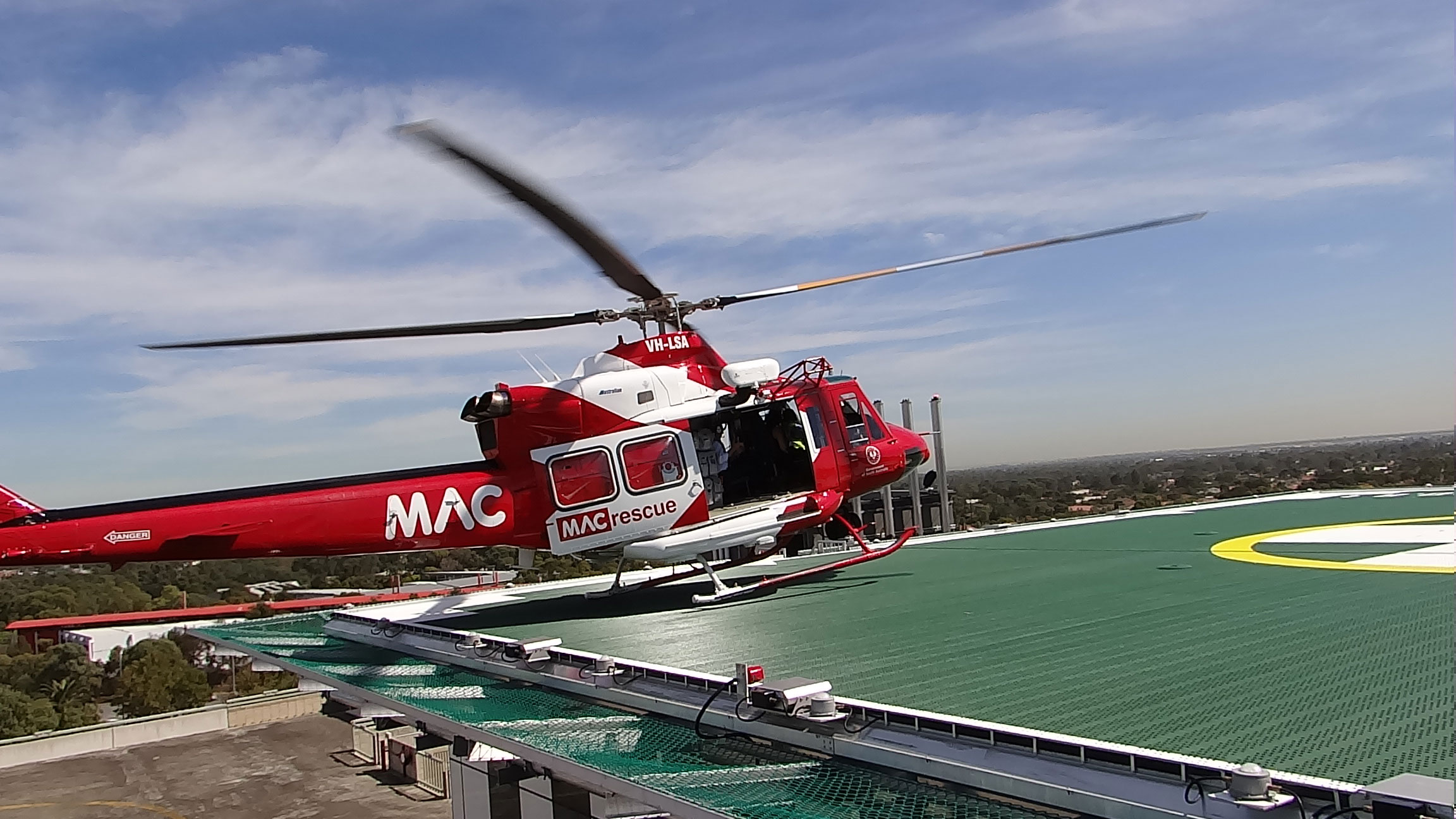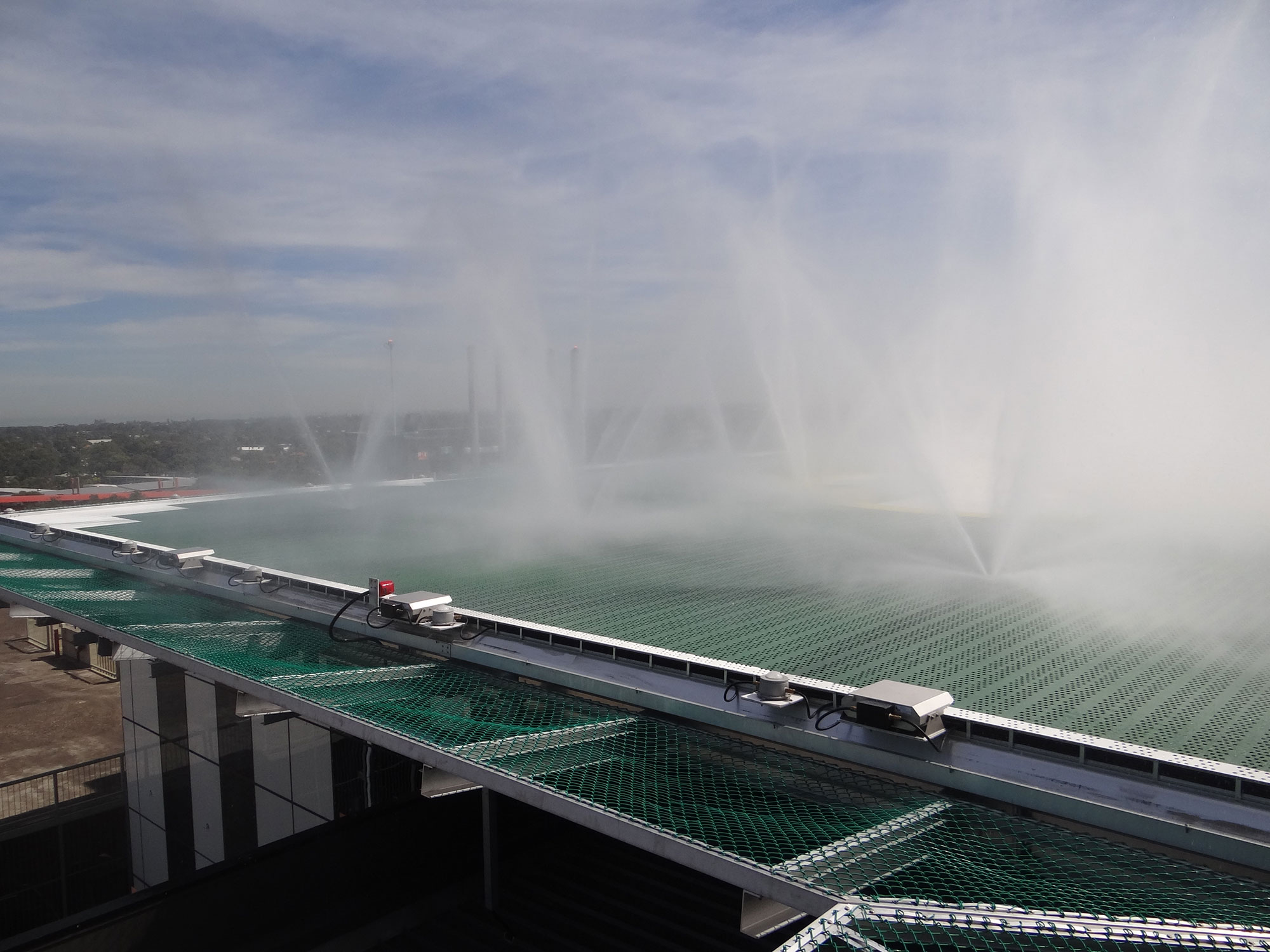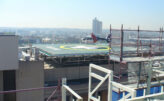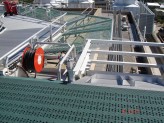Elevated and Rooftop Helipads and Heliports
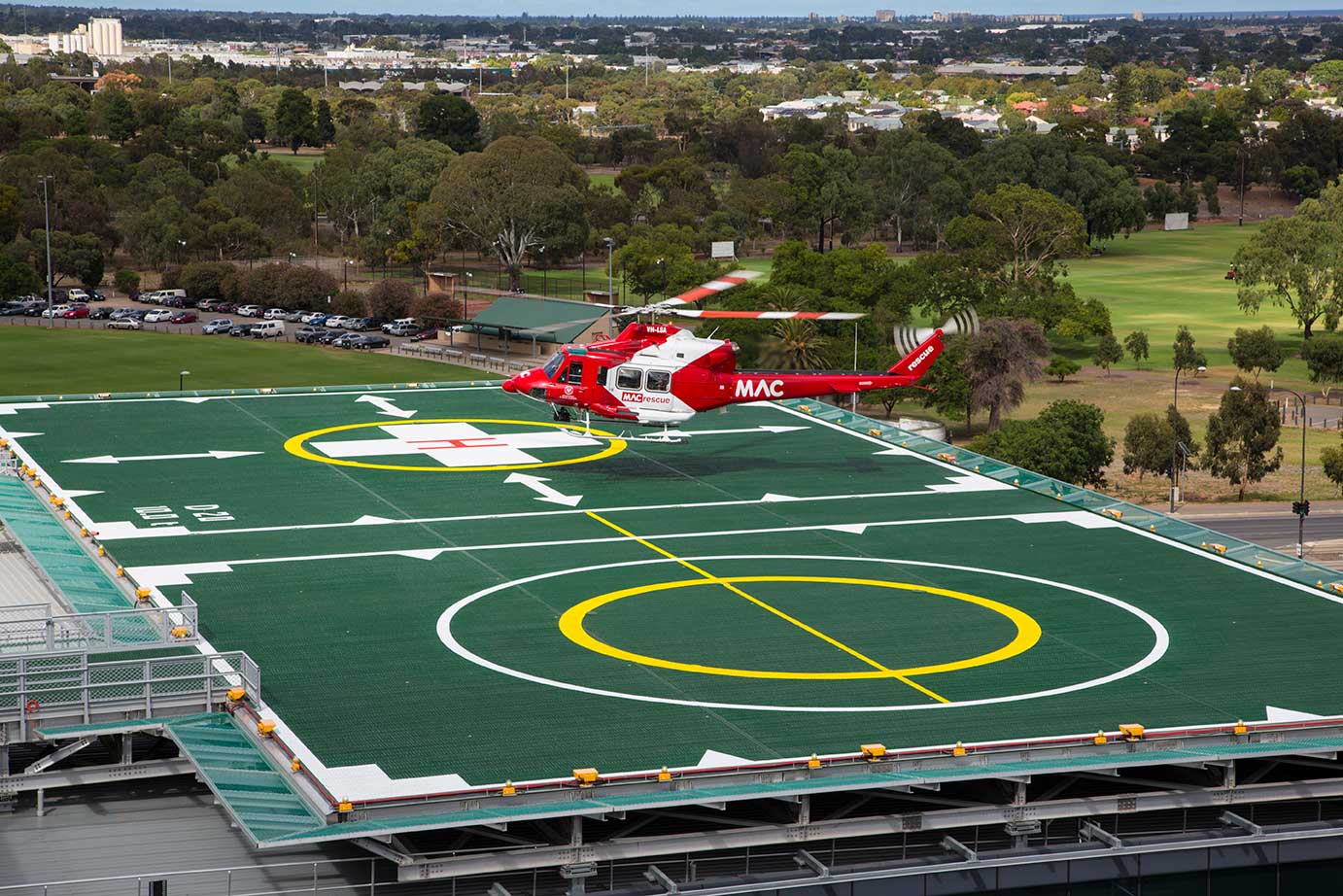
Elevated and Rooftop Helipads and Heliports
Relevant documentation here include Annex 14 (Volume II Heliports Third edition July 2009) and the Heliport Manual (9261-AN903-Third Edition 1995) and appendices. These ICAO SARPs prescribe the helipad physical characteristics, obstacle control criteria, visual aids requirements and guidance on elements such as site selection and structural design. The discussion below relates more to helipads built to ICAO and European standards, which are somewhat more stringent, than the US FAA standards.
Being in the helipad business for over 25 years, Aluminium Offshore were the pioneers to introduce the concept of aluminium helipads to the hospital/healthcare industry and also the first to bring aluminium rooftop helipads to Australia in the year 2000, please click here for our hospital helipad/hospital helideck/healthcare helipad track records.
Determination of Helipad Size – ICAO Criteria
Helipad size determination in accordance with the current ICAO SARPs is based on a number of factors, notably the helicopter greatest overall dimension (D) and the Performance Classification of the helicopter operations.
For conventional helicopters with a single main rotor, D is the overall length with the main and tail rotors turning. The ICAO SARPs assume that for elevated heliports, the FATO and TLOF are coincidental.
The following discussion refers to elevated heliports which are the principal application of the XE range of helidecks.
The size of a FATO intended to be used by helicopters operated in Performance Class 1 shall be as prescribed in the helicopter flight manual (HFM) except that, in the absence of width specifications, the width shall be not less than 1 D of the largest helicopter the FATO is intended to serve.
The size of a FATO intended to be used by helicopters operated in Performance Class 2 or 3 shall be of sufficient size and shape to contain an area within which can be drawn a circle of diameter not less than 1 D of the largest helicopter when the MTOM of helicopters the FATO is intended to serve is more than 3 175 kg or 0.83 D of the largest helicopter when the MTOM of helicopters the FATO is intended to serve is 3 175 kg or less (with a recommendation that 1 D is applied for the smaller helicopters)
The FATO is surrounded by a safety area which extends beyond the FATO by nominated distance criteria including having a minimum external dimension of 2D. A notable change introduced in the third edition of Annex 14 is that the safety area need not be solid.
As an example of the application of the criteria for a Sikorsky S76 operating in Performance Class 2, the FATO needs to be of sufficient size to accommodate a circle of 16.00m, the S76 D value. The S76 PC2 FATO would be surrounded by a safety area with an external dimension of 32metres, (2D).
The Bell 412EP has a D value of 1`7.1 metres and a minimum FATO size of 22.9m by 26.5m as prescribed in the flight manual for operations in Performance Class 1 from an elevated helipad with restricted adjacent drop down height. That FATO would be surrounded by a (non-solid) safety area the minimum external dimensions of which would be 34.2 meters (2D) by 35.05m (26.5m + 0.5D).
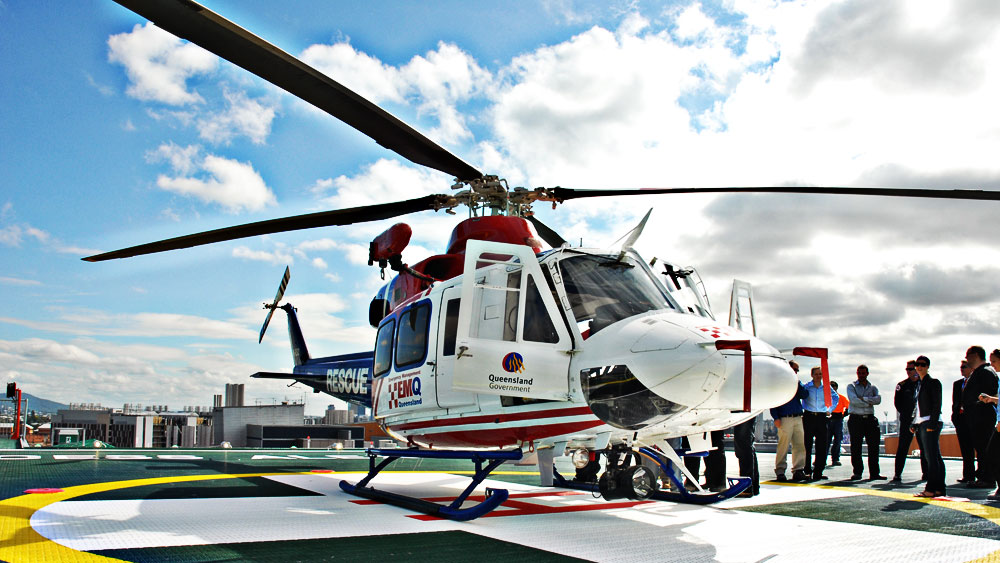
Safety Considerations
To understand the need for adequate rescue and fire fighting services at the helipad, it is helpful to look at a couple of different Code requirements. The UK Civil Aviation Authority (CAA) has assessed the level of risk from fire following an accident on elevated heliport sites as being potentially catastrophic and all flights for which permissions are necessary under Rule 5 of the Rules of the Air (which covers flight below 1000 feet AGL) are necessary will attract a condition that the recommended levels of protection and response for operations to elevated helicopter landing sites are in accordance with ICAO Annex 14, Volume II, Chapter 6 (Table 6-3) and the ICAO Heliport Manual Chapter 6. This condition will be applied to all flights.
It is also important to consider the safety case relating to a crash situation and the potential free release of fuel from the helicopter’s fuel tanks. Current helicopters have a longer range over older models and therefore carry more fuel. A 1000l fuel discharge which is on fire is not easy to contain and can be expected to make its way down the building pipes, with potentially disastrous consequences to those below. The XE Enhanced Safety helideck has a passive fire suppression system which ensures that any fuel discharge is entrapped and extinguished within the helideck and drained away as raw fuel, which of course can be safely collected at a remote location.
Rescue and Fire Fighting Provisions – UKCAA Guidance
The UK Civil Aviation Authority is a regulator that produces regulatory and advisory publications in a range of formats including the Civil Aviation Publication (CAP) series. Annex 3 to Chapter 21 of CAP 768 Guidance Material for Operators (1st edition August 2008) provides the following comments in relation to and Rescue and Fire Fighting Services (RFFS) for onshore helicopter landing sites and references the technical guidance for presented in CAP 437 Offshore Helicopter Landing Areas – Guidance on Standards (6th edition, Dec 2008) which strongly encourages consideration of the use of a Deck Integrated Fire Fighting Systems (DIFFS) on elevated facilities.
- 7.2 Particular problems arise from the operation of helicopters at elevated heliports that require special attention with regard to the RFF provisions. One important aspect is the confined and restricted space available on the average elevated heliport. This will impose restrictions on foam monitor and/or hose positioning and general fire fighting tactics. It is feasible that an accident could result in a fuel spill with a fire situation which could quickly cut off or reduce the already limited routes of escape to a place of safety for the helicopter occupants. In addition the accident or fire may involve RFF facilities located adjacent to the landing area. As a result the requirement for the amount of extinguishing agent at elevated heliports is based on a fire fighting action which may be required to last much longer than at surface level heliports. In addition, at an elevated heliport, RFFS should be immediately available on or in the vicinity of the landing area whilst helicopter operations are being conducted in order to achieve a rapid ‘knock-down’ response.
- 7.3 At an elevated heliport, at least one hose line, complete with nozzle/branch pipe and capable of delivering foam in a jet spray/aspirated pattern at 250 L/min, should be provided. It is also considered essential at an elevated heliport to be able to apply the fire fighting agents, both principal and complementary, to the entire landing area irrespective of the wind direction. To achieve this and to overcome the possibility of a monitor being involved in the accident, it is necessary that at elevated heliports in Category H2, that at least two monitors be provided each having a capability of achieving the required discharge rate, and positioned at different locations around the helideck so as to ensure the application of foam to any part of the landing area under any weather conditions. Alternatively, a system of hand controlled branch lines or a deck integrated fire fighting system (DIFFS) may be considered. Further technical guidance is available in Chapter 5 of CAP 437; Offshore Helicopter Landing Areas – Guidance on Standards. To further ensure the application of the agent to the entire landing area, monitors should preferably be operable from a remote control position located clear of the landing area and easily accessible.

Rescue and Fire Fighting Provisions – Application of ICAO SARPS
- ICAO provides relevant SARPS and associated guidance material in relation to the provision of RFF facilities in Annex 14 Volume II and the Heliport Manual. The ICAO provisions are essentially the same as those detailed by the UKCAA in CAP 768 and 437 as discussed above.The ICAO SARPs classify the levels of protection needed for elevated helipads by dividing them into H categories according to the size of the helipad. H1 helipads are up to 15m in diameter, H2 up to 24m and H3 from 24m to 35m. As an example, an H2 helipad will require (a) performance level B foam applied at 500lpm for 10 minutes plus (b) complementary agents which are usually hand held fire extinguishers to be situated at the helipad area.
- ICAO also cautions that ‘although the amount of fuel carried by helicopters is generally less than that carried by aeroplanes, a more serious fire situation can occur as the fuel tank is located underneath the occupied portion of the fuselage and close to the engine. In other words, burning fuel in a helicopter crash is more likely to remain within the area adjacent to the helicopter and thus the resulting fire situation may be more serious than one involving an aeroplane of similar size.’ (Heliport Manual, 1995, para 6.1.7)
- The best way to meet these requirements and to afford the maximum fire protection for helicopter crew, passengers, building occupants and third parties adjacent to the building is to instal a DIFFS system to the helipad. The helipad itself should be of the Enhanced Safety™ type which contains a built-in, automatic fire suppression system.
- In November 2008, representatives from international organisations including the UK CAA and members of the ICAO Heliport Design Working Group attended live fire tests on the XE Enhanced Safety helideck with a DIFFS capability. The tests were organized by Aluminium Offshore and the overwhelming response from senior representative in attendance was support for the passive helideck with DIFFS option as a world best practice for helipad fire control.
- The UK CAP 437 guidance material was revised in December 2008 following the demonstration of XE Enhanced Safety Deck with water based DIFFS capability. Although the current version of Annex 14 Volume II does not included reference to the benefits of helidecks with a passive fire suppression system and integrated DIFFS capability, it is anticipated that discussion of the option will be included in future revisions of the Annex and the Heliport Manual in a similar manner to the CAP 437 guidance.
Practical Considerations
AOPL recommends consideration of the following practical issues when planning your elevated helipad
-
- Size of the helipad (discussed above) and connected with which type of helicopter you intend to operate
- Loading considerations- more critical for existing buildings than new structures, can the roof columns take the dynamic and static loads from the helicopter
- Structural considerations- how will the helipad be supported? A trussed support frame may be best as this can allow reaction loads to go directly into the building columns rather than the roof
- Turbulence and placement of helipad- this is a complex topic and cannot be discussed at length here. “Preferably, the helipad should be elevated such there is a clear space of at least 6ft (2m) in height between the pad and the supporting roof. This will prevent additional turbulent flow from being generated and allow more streamline flow over the helipad” (“Evaluating wind flow around buildings on heliport placement”- Federal Aviation Administration, USA, DOT/FAA/PM-84/25)
Maintenance – design for minimal maintenance. This is especially critical when the helipad is cantilevered out of the building top. Again, an aluminium helipad requires virtually no maintenance.


